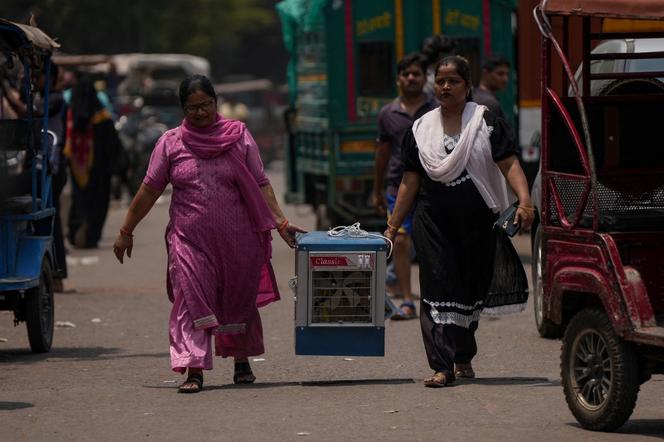


The mercury hovers between 45°C and 47°C, the parks normally so popular with New Delhi's residents are deserted, and only street dogs are left, digging holes in the ground to keep cool. In the half-empty streets, passers-by walk with their heads and faces covered by scarves or in the shade of umbrellas. The tarmac melts in the hottest hours. The Indian capital and the north of the country are being suffocated by a grueling and inhuman heatwave.
On Monday, May 20, the thermometer passed the 47°C mark, with a record of 47.8°C in Najafgarh on the outskirts of New Dehli, the highest temperature recorded in the country. The Indian Meteorological Department issued a red alert for the megalopolis and parts of Rajasthan, Punjab, Haryana and western Uttar Pradesh. Authorities have ordered early school closures for summer vacation, but construction sites continue to operate.
The atmosphere is like a gigantic wind tunnel of hot, dry, dusty air. The heat is almost relentless: At night, the temperature doesn't drop below 32°C and the rooftop water tanks provide scalding water.
It is, of course, the poor who suffer most during this latest heatwave, those living in precarious or cheap housing, with no way of cooling down. "I can't afford air conditioning; I only have a fan. It's 40°C inside my home and I can't sleep. I'm exhausted," said a mother who lives in a densely populated area of New Delhi and has to take buses turned into ovens to get to work.

All those who make their living from odd jobs on the streets, like street vendors, garbage collectors, ironers, dressmakers, barbers, rickshaw drivers and deliverymen, keep working despite the heat. "I arrive at 8 am and work until 7 pm. I have no choice, I have four children to feed," said a 40-year-old plant seller, who had set up her cart at the entrance to an upmarket district. She has lived with her husband and children in a slum made of tents and tin sheets since they left Uttar Pradesh.
On the sidewalk of Lodhi Colony in the south of the city, Uday Chand, a migrant from Bihar, had stretched a piece of cloth between two trees to protect the vegetables he sells from the sun. "I work from 6 am to 10 pm. People don't come during the day anymore, it's too hot. It's hard, you lose a lot of the produce, which rots," he said. He manages to earn 400 to 500 rupees a day (€4.5 to €5.50).
Nearby, a man waited inside his pedal rickshaw, parked under a bridge. "There are very few customers, people don't go out and schools are closed. There are no more children to transport. I wait all day anyway; I have no place to stay so I sleep in my rickshaw. I drink five liters of water a day so I don't become dehydrated," said Ramesh Missera, a former farmer from Bihar who arrived in New Delhi 15 years ago after losing his small farm in the floods. He was 56, but looks 10 years older. "When I migrated here, it was already very hot, but there was more rain. Now it's dry."
You have 42.12% of this article left to read. The rest is for subscribers only.
